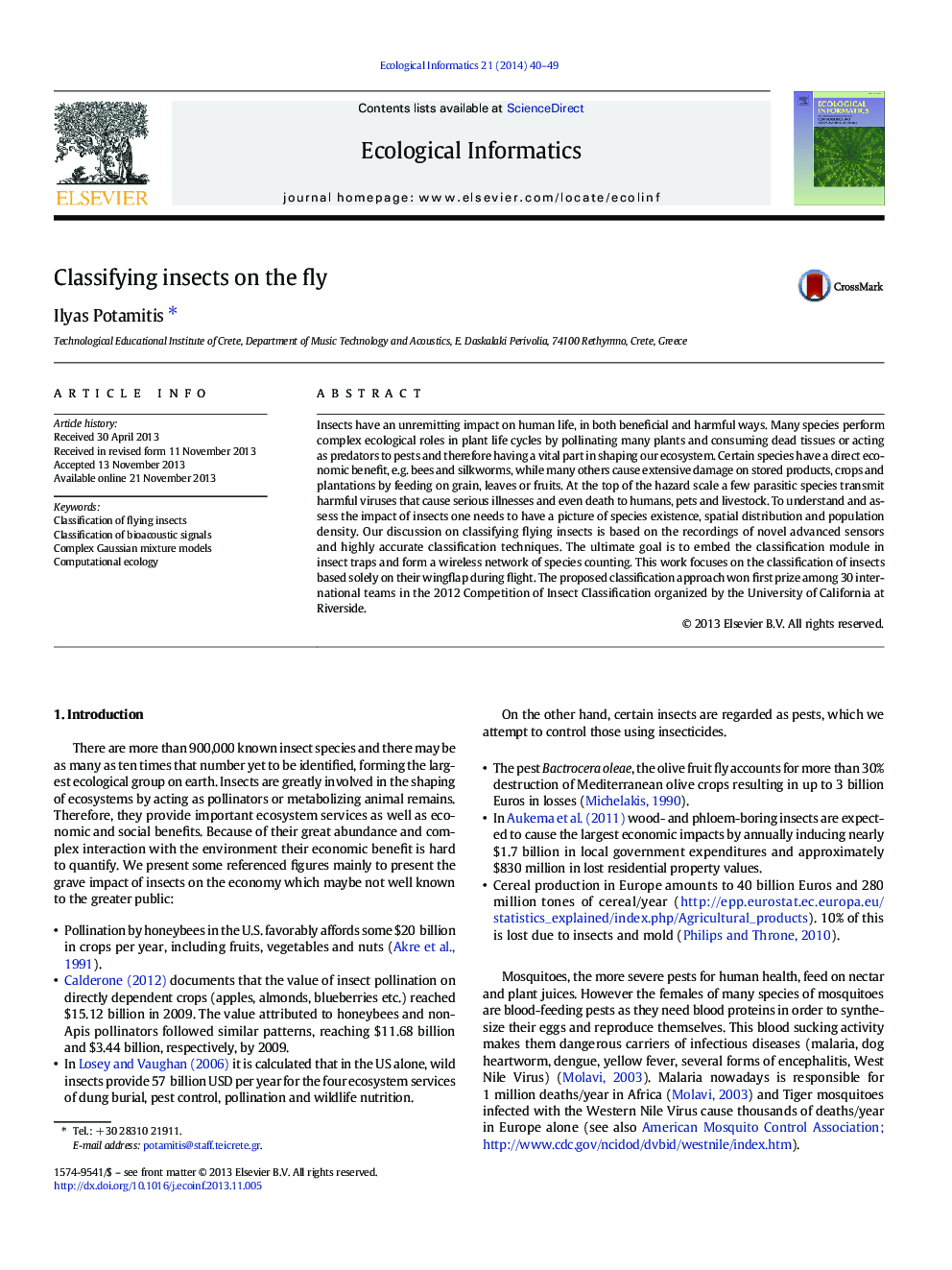| Article ID | Journal | Published Year | Pages | File Type |
|---|---|---|---|---|
| 4374894 | Ecological Informatics | 2014 | 10 Pages |
•We classify flying insects based on their wing-flap.•We show that mosquitoes can be categorized based on their wing-flapping.•Complex Gaussian mixtures allow classification of the light fluctuations produced by insects’ wing-flaps.
Insects have an unremitting impact on human life, in both beneficial and harmful ways. Many species perform complex ecological roles in plant life cycles by pollinating many plants and consuming dead tissues or acting as predators to pests and therefore having a vital part in shaping our ecosystem. Certain species have a direct economic benefit, e.g. bees and silkworms, while many others cause extensive damage on stored products, crops and plantations by feeding on grain, leaves or fruits. At the top of the hazard scale a few parasitic species transmit harmful viruses that cause serious illnesses and even death to humans, pets and livestock. To understand and assess the impact of insects one needs to have a picture of species existence, spatial distribution and population density. Our discussion on classifying flying insects is based on the recordings of novel advanced sensors and highly accurate classification techniques. The ultimate goal is to embed the classification module in insect traps and form a wireless network of species counting. This work focuses on the classification of insects based solely on their wingflap during flight. The proposed classification approach won first prize among 30 international teams in the 2012 Competition of Insect Classification organized by the University of California at Riverside.
